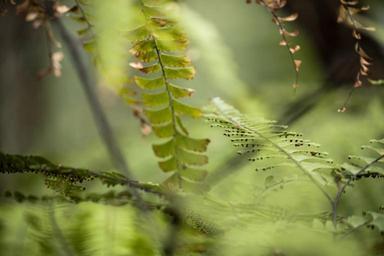Introduction
In the ever-evolving realm of visual art, linocut printing techniques stand as a unique bridge between two seemingly disparate disciplines—photography and printmaking. The intersection of these art forms allows for an exploration of identity, expression, and visual storytelling that resonates deeply in modern aesthetics. While photography captures moments in time, linocut printing transforms images into tangible expressions through intricate carving and inking techniques. This article delves into the rich world of linocut printing, exploring its significance in contemporary art and its relationship with various photography styles.
Linocut Printing Techniques: A Bridge Between Photography and Printmaking
Linocut printing is an innovative method that merges the tactile nature of printmaking with the ephemeral quality of photography. In essence, it involves carving an image into a linoleum block, applying ink to the surface, and transferring it onto paper or fabric. This technique not only preserves the essence of a photograph but also infuses it with texture and depth that digital formats often lack.
The Historical Context of Linocut Printing
Origins of Linocut Printing Techniques
Linocut printing emerged as a popular form of artistic expression in the early 20th century. Artists like Pablo Picasso adopted this method to create bold graphics that challenged traditional notions of beauty and representation. Understanding its historical context enriches our appreciation for how this technique has evolved over time.
The Influence of Woodblock Printing Techniques
To fully grasp linocut printing, one must explore its roots in woodblock printing techniques. Originating in ancient China, woodblock printing laid the groundwork for later developments in printmaking. Similar principles apply; however, linoleum offers distinct advantages such as ease of carving and versatility.
Aesthetic Qualities in Art: How Linocut Enhances Visual Storytelling
The aesthetic qualities inherent in linocut printing techniques amplify visual storytelling by adding layers to both imagery and meaning. Unlike photographs that capture reality as it is, linocuts reinterpret images through stylization and abstraction, enabling artists to convey emotional reflections that resonate with viewers on multiple levels.
Artistic Choices: Carving Your Identity Through Linocut
Selecting Your Subject Matter
Choosing what to carve is pivotal—should one opt for self-portrait photography or abstract portraits? The subject matter can define not just the artwork but also the emotional undertones conveyed through color palettes and composition.
Exploring Identity in Art Through Linocut Prints
Artists often utilize linocuts to explore themes surrounding identity—an engaging aspect when combined with self-expression in art. By portraying their own likeness or significant symbols from their lives, creators can evoke profound connections between their personal narratives and broader societal contexts.
Integration with Photography: Capturing Moments in Photography
Transforming Photographs into Linocuts
Photographers can experiment by transforming their own fine art photography into linoleum prints. This process entails selecting a photo rich in contrast—often characterized by vibrant color compositions—that translates well into black-and-white line work.

Faceless Portraits: An Artistic Exploration
Faceless portraits represent a compelling trend within contemporary art—a perfect subject for linocut printing techniques. By emphasizing form over facial features, artists invite viewers to engage with deeper themes like anonymity and shared human experience.
Colorful Portraits vs. Abstract Portraits: Finding Balance
When working with linocuts, artists must grapple with decisions regarding color application. Should they opt for colorful portraits bursting with vibrancy or lean towards monochromatic abstract portraits? Each choice impacts not just aesthetic appeal but also emotional resonance.
Photography Techniques That Complement Linocut Printing
Understanding effective photography techniques enhances both fields' relationship. For instance:


Creating Art for Mood Enhancement Through Linocuts
Art has long been recognized for its ability to influence mood and atmosphere within homes—an idea woven seamlessly into interior design concepts today. Linolcut prints serve as striking wall decor options that enhance home aesthetics while allowing personal stories to shine through decorative elements.
Decorative Art Prints: Merging Functionality with Creativity
Incorporating decorative art prints created via linoleum cuts adds character to everyday spaces while serving functional roles as conversation starters or focal points within home interiors.
FAQs
What materials do I need for linocut printing?- Essential materials include linoleum blocks, carving tools (like gouges), ink rollers (brayers), ink, paper suited for printmaking, and a baren or press for transferring ink from block to paper.
- Yes! Photographs can be transferred onto your block using various methods (such as tracing or graphite transfer) before carving out your design based on those outlines.
- Common themes include identity exploration (self-portraits), nature-inspired motifs, cultural symbolism, societal issues represented through abstract forms—all contributing to thought-provoking imagery.
- Various carving techniques allow artists to create diverse textures—from soft gradients achieved through shallow cuts to bold outlines produced using deeper gouge work—enhancing overall visual impact.
- Absolutely! Many artists integrate watercolor washes or collage elements post-printing, enhancing their pieces’ depth while blending different artistic approaches harmoniously together on one canvas.
- Consider framing them behind glass; use varied sizes creatively along gallery walls; employ stylish mounts or clips; even mix them up alongside other types of wall art!
Conclusion
In conclusion, linocut printing techniques serve as a profound connection between photography and printmaking—a dialogue about http://mindfulmotions245.raidersfanteamshop.com/shadow-and-light-create-dynamic-visual-tension identity captured through artistic choices that resonate deeply within contemporary culture today! From self-portrait photography reflecting internal landscapes to vibrant decorative prints enriching our living spaces visually—these two disciplines offer limitless opportunities for creative exploration! Whether you’re an artist looking to transcend traditional boundaries or someone seeking personalized wall decor that speaks volumes about who you are—embracing this fusion could very well be your next step forward! So grab your tools; it's time to carve out your story!